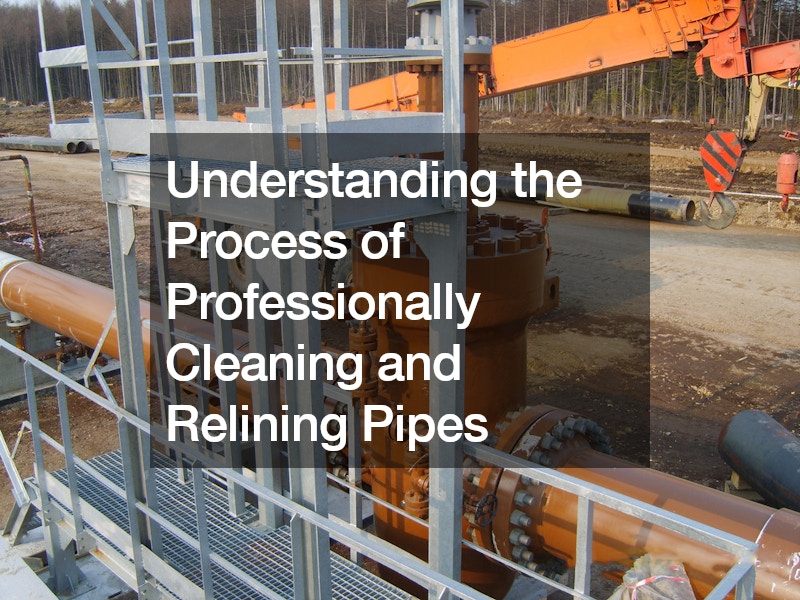Maintaining functional and efficient sewage systems is crucial for any infrastructure. Over time, pipes can deteriorate, leading to cracks, leaks, and blockages that hinder proper wastewater flow. Traditional methods of repairing such issues often involve extensive excavation and replacement, causing disruption and significant costs. However, advancements in plumbing technology have introduced a more efficient and cost-effective solution: pipe cleaning and relining.
Understanding the Process
Pipe cleaning and relining is a professional procedure designed to rehabilitate deteriorating sewage pipes without the need for excavation. The process involves several steps, each carefully executed to ensure optimal results.
Inspection and Assessment
The first step in the process is a thorough inspection of the sewage pipes. This typically involves the use of advanced tools, including miniature cameras, to assess the condition of the pipes from within. Any cracks, leaks, or blockages are identified during this stage, providing valuable insight into the extent of the damage.
Cleaning
Once the pipes are inspected, the next step is cleaning. Over time, pipes can accumulate various forms of debris, including rust, dirt, hair, sewage, and oil. This buildup not only reduces the flow capacity of the pipes but also compromises their structural integrity. To address this, professional plumbers utilize specialized equipment. For example, a pipeline debris tool employs advanced mechanisms such as high-pressure water jets or rotating chains to dislodge stubborn deposits and clear obstructions from the inner walls of the pipes. This thorough cleaning process ensures that the pipes are free from debris and contaminants, allowing for optimal flow and preserving the structural integrity of the sewage system.
Relining
With the pipes thoroughly cleaned, the relining process begins. This involves inserting a specially designed liner into the existing pipe. The liner, typically made of felt material, is impregnated with epoxy resin, making it durable and resistant to corrosion. Before installation, the liner is carefully measured and cut to fit the dimensions of the pipe accurately.
Inflation and Curing
Once the liner is inserted into the pipe, it is inflated using pressurized air. This causes the liner to adhere to the inner walls of the pipe, effectively creating a new, seamless pipe within the old one. The curing process begins shortly after, during which the epoxy resin hardens, forming a strong and durable lining. Heat may also be applied to accelerate the curing process and ensure optimal results.
Final Inspection and Testing
After the curing process is complete, a final inspection is conducted to ensure that the relining was successful. This typically involves another camera inspection to verify that the new lining is properly installed and free of defects. Additionally, flow tests may be performed to confirm that the pipes are functioning as intended.
Benefits of Pipe Cleaning and Relining
The utilization of pipe cleaning and relining techniques offers a plethora of advantages over traditional repair methods, making it a preferred choice for addressing sewage pipe issues:
Cost-Effectiveness
One of the primary benefits of opting for pipe cleaning and relining is its cost-effectiveness. Compared to the labor-intensive and resource-heavy process of excavation and pipe replacement, cleaning and relining are often significantly more economical. By eliminating the need for extensive digging and the installation of new pipes, property owners can save both time and money on repair expenses.
Minimal Disruption
Unlike traditional repair methods that involve digging up large sections of ground to access and replace damaged pipes, pipe cleaning and relining cause minimal disruption to surrounding infrastructure and property. With no excavation required, there is no need to disrupt roadways, sidewalks, or landscaping, minimizing inconvenience for residents, businesses, and commuters alike. This reduced disruption also translates to shorter project durations, allowing normal activities to resume more quickly.
Long-Lasting Solution
The epoxy resin lining utilized in the relining process offers exceptional durability and resistance to corrosion, ensuring a long-lasting solution for sewage pipe rehabilitation. Unlike traditional materials such as concrete or clay, which may degrade over time and require frequent maintenance or replacement, epoxy resin linings provide a reliable barrier against corrosion, root intrusion, and other common causes of pipe deterioration. As a result, property owners can enjoy peace of mind knowing that their sewage system is protected for years to come.
Environmentally Friendly
In addition to its cost and convenience benefits, pipe cleaning and relining are also environmentally friendly alternatives to traditional repair methods. By eliminating the need for excavation and the disposal of old pipes, these techniques reduce the environmental impact associated with construction projects. Furthermore, since relined pipes require fewer resources to manufacture and install compared to new pipes, they contribute to a smaller carbon footprint, supporting sustainability efforts in infrastructure management.
In Closing
Pipe cleaning and relining represent a significant advancement in plumbing technology, offering a cost-effective and efficient solution for rehabilitating deteriorating sewage pipes. By utilizing specialized equipment and techniques, professional plumbers can effectively clean and reline pipes, restoring them to optimal condition without the need for excavation. As infrastructure continues to age, the importance of proactive maintenance and rehabilitation methods like pipe cleaning and relining cannot be overstated.
.


